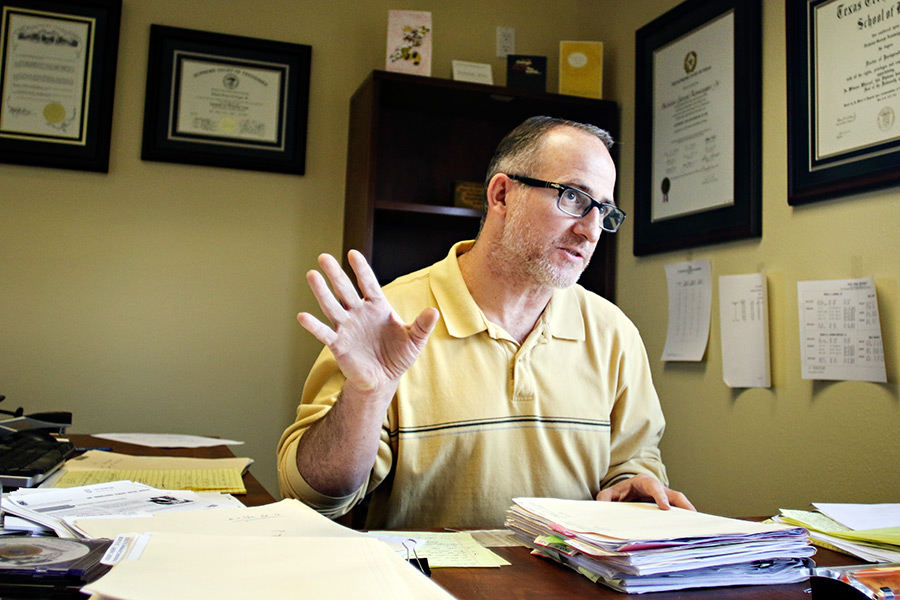Public defense attorneys across the United States and in Montana are overworked and understaffed, and as a result, defendants are often spending more time in jail.
Earlier this year, the state Legislature created an 11-member panel to look at the issues facing the Office of the State Public Defender, the agency tasked with representing those who have been charged with a crime but cannot afford an attorney to defend them. The Office of the State Public Defender was created in 2005 after the American Civil Liberties Union sued the state for not providing defendants adequate counsel.
“The system is so much better now, but the Office of the State Public Defender is still suffering from growing pains and the Legislature has been slow to respond to its needs,” said Niki Zupanic, public policy director for ACLU of Montana.
Between 2010 and 2014, the number of cases assigned to the Office of the State Public Defender (OPD) grew by 14.6 percent. During the 2014 fiscal year, the office had more than 21,000 ongoing cases.
Prior to OPD’s creation, public defenders were contracted by the county and appointed by judges. While the state was supposed to reimburse counties for the public defenders’ work, it often shortchanged local governments and, because of that, counties frequently cut corners, according to Zupanic. Public defenders, she added, were rarely given adequate resources needed to properly prepare cases and defendants in some cases took plea deals even if they were innocent.
Nick Aemisegger, regional deputy public defender for Region 1 based in Kalispell, said the current system does a better job protecting the rights of the accused, but there are still challenges. Most notably, Aemisegger said his team of attorneys is often pushed to the brink and must juggle dozens of cases at once. While it is hard to nail down a firm number, Aemisegger said it’s not uncommon for attorneys in his office to work on more than 100 felony cases at once.
According to data from the OPD, of the nearly 100 attorneys working for the agency during fiscal year 2014, about 90 percent took on a larger-than-recommended caseload. Case weight hours are estimated by each type of offense. For example, in a felony DUI case, a lawyer can expect to work at least 15 hours. A felony sex offense is expected to take upwards of 50 hours and a homicide can take upwards of 100 hours, although Aemisegger notes that those are suggested guidelines and more complex cases can take longer.
In the Region 1 office in Kalispell, an attorney expected to take on about 1,500 hours of casework a year ended up working 1,924 case hours. Aemisegger said such long hours and stress can lead to burnout and high turnover. It also means that some cases can fall through the cracks as attorneys take on more clients.
“We place a very high value on representing our clients well, but in most cases that takes a lot of time,” he said.
Fourteen full-time attorneys work in the Region 1 office and another four work at a satellite office in Polson. The OPD also relies on 36 contract attorneys who help in outlying communities, like in Libby, or when there are conflicts of interest. Conflicts arise when there is more than one defendant in one case. Aemisegger said it would be impossible for a group of attorneys in one office to effectively represent clients who may be passing the blame on others.
“At trial you can’t have one attorney representing a client who is throwing one of your other clients under the bus,” he said.
Aemisegger said there are defendants in Flathead County who could get out of jail faster if they had the resources to hire their own attorney who could devote more time to their cases. He said the delays in justice have a trickle-down effect across the system and can result in crowded jails, an issue Flathead County is familiar with. The Flathead County Detention Center was built to handle about 60 inmates, but it frequently holds more than 100 every night. Aemisegger said the price of judicial backlogs and overcrowded jails often falls on the taxpayer.
During the 2015 Legislature, a task force was created to determine if restructuring the state public defender office could relieve the burden faced by attorneys. Dave Bohyer, research director for the Legislative Services Division, said the committee (made up of state legislators and members of the public, including a judge and attorney) would also study how public defense offices are run in other states. Bohyer said the primary goal is to make the offices more efficient and find ways to reduce its high turnover rate among staff and attorneys. The task force’s next meeting is Dec. 10 in Helena.
Issues within the public defender system extend beyond Montana’s borders. A few years ago, former U.S. Attorney General Eric Holder said the system was in a “state of crisis” nationwide. Earlier this year, the ACLU sued a California county where 60 public defenders were handling 42,000 cases annually. The American Bar Association recommends capping the number of cases a single attorney handles at 150 felonies and 400 misdemeanors every year. Because of those high case rates, Zupanic with the ACLU said, some defendants take plea deals and admit guilt just to get out of jail faster.
“Clients may feel pressure to take a plea deal even if they are innocent because they know that their attorney just doesn’t have the time to put together a good case,” she said.
Aemisegger said the OPD could use more attorneys, but added that the OPD is constantly fighting for more funding. Zupanic said the ACLU would support a system in which funding keeps pace with the agency’s caseload.
